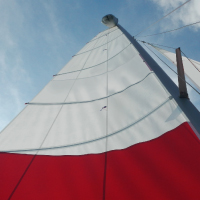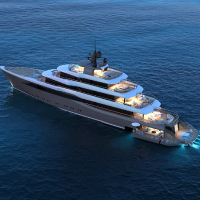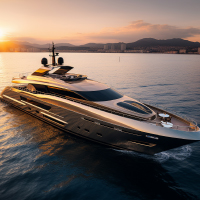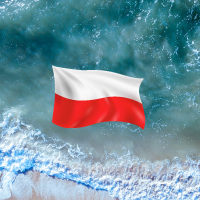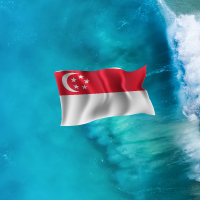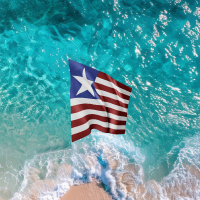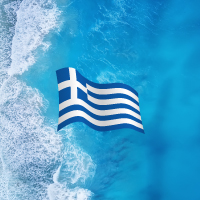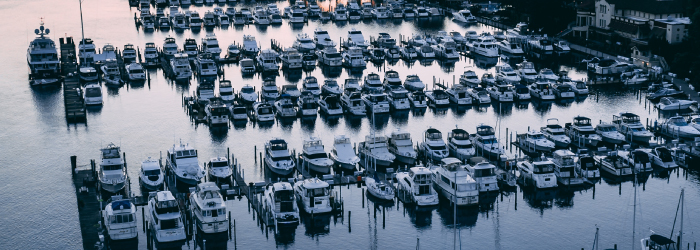
Recommended contact person
Boating is for many people a hobby, for some others a practical means of transport, and in some cases, a profession. With thousands of vessels navigating the waterways of Europe, safety becomes a paramount concern.
The European Union addresses this through a rigorous classification system known as CE classification. This system is part of the Recreational Craft Directive (RCD) and provides a framework to ensure that boats are used in the appropriate environments, enhancing safety and protecting lives.
In this comprehensive guide, we will analyse the CE classifications, exploring what they mean, the types of boats that fall under each category, and the critical importance of this system in the boating industry.
Introduction to CE Classification
The CE classification is a certification mark that boats must adhere to if they are intended for sale within the European Union. Introduced under the Recreational Craft Directive, it serves as a standard to ensure that boats meet essential safety requirements. The directive covers a broad spectrum of vessels, ranging from small pleasure craft to more substantial yachts and working boats.
There are four primary CE categories: A (Ocean), B (Offshore), C (Inshore), and D (Sheltered Waters). Each category specifies the types of conditions the boat is designed to handle, such as the maximum wind force and wave height. The classifications help boat owners and operators understand the limitations and capabilities of their vessels, ensuring that they are used in the environments for which they are designed.
Category A (Ocean) – The Ultimate in Maritime Design
Description
Boats classified under Category A are designed for “extended voyages where conditions may exceed wind force 8 (over 40 knots) and significant wave heights of over 4 meters”. These are the toughest and most seaworthy boats, built to handle the harshest conditions that the world’s oceans can present.
Boats Falling Under Category A
Yachts and large cruising vessels typically fall under this category. These boats are often equipped with heavy-duty materials, advanced navigation systems, and strong hull designs to ensure they can withstand long periods at sea, far from the shore. The size of pleasure boats in this category usually starts from 40 feet (approximately from 12 meters).
What It Means for Boaters
Owning a Category A boat means that you are equipped to handle the most extreme conditions. These boats are suitable for serious sailors who intend to undertake long ocean passages. However, it also comes with the responsibility of understanding and preparing for the potential dangers of offshore sailing, including understanding weather patterns, navigation, and emergency procedures.
Category B (Offshore) – Designed for the High Seas
Description
Category B boats are intended for “offshore voyages with wind force up to 8 (40 knots) and wave heights up to 4 meters.” These boats are designed for seas that are less extreme than those encountered in Category A but still require substantial seaworthiness.
Boats Falling Under Category B
These boats are typically medium-sized yachts and motorboats, designed for coastal cruising and open sea passages that are not too far from land. The size of pleasure boats in this category generally ranges from 30 to 50 feet (approximately 9 to 15 meters).
What It Means for Boaters
Category B boats offer a compromise between the extreme capabilities of Category A and the more relaxed conditions of Category C. These boats are perfect for adventurous sailors who want to explore coastal regions and undertake medium-length sea crossings. However, sailors must still be cautious and knowledgeable about the limits of their vessel and the conditions they are likely to face.
Category C (Inshore) – Perfect for Coastal Adventures
Description
Category C boats are designed for “coastal waters, large bays, estuaries, lakes, and rivers where conditions may include wind force up to 6 (27 knots) and wave heights up to 2 meters.” These boats are meant for calmer waters, where the weather is less extreme.
Boats Falling Under Category C
Smaller motorboats, sailing yachts, and day cruisers typically fall under this category. These vessels are designed for comfort and ease of use in more sheltered waters, where the risks are lower, and the sailing is more relaxed.
What It Means for Boaters
Boats in Category C are ideal for weekend sailors and those who enjoy exploring coastlines and inland waterways. These vessels are less about long-distance capability and more about accessibility and ease of use. However, it’s important for boaters to remember that these vessels are not designed for open sea conditions, and venturing too far offshore could be dangerous.
Category D (Sheltered Waters) – Calm and Peaceful Exploration
Description
Category D boats are intended for “smaller, sheltered waters such as rivers, canals, and small lakes where conditions may include wind force up to 4 (15 knots) and wave heights up to 0.5 meters.”
These are the most relaxed conditions in the CE classification.
Boats Falling Under Category D
These are typically smaller boats, including dinghies, small motorboats, and kayaks, designed for calm and protected waters.
What It Means for Boaters
Category D boats are perfect for those who enjoy peaceful days on calm waters, whether it’s fishing, sightseeing, or simply relaxing. These vessels are not meant for any sort of rough water conditions and should be used strictly within the limits of their design. Understanding the limitations of Category D boats is crucial to avoiding unnecessary risks.
The Importance of CE Classification
The CE classification is not just a bureaucratic measure; it’s a critical safety standard that protects boaters by ensuring that vessels are used in the conditions they are designed for. Here’s why this classification is so important:
Ensuring Safety at Sea
The primary purpose of the CE classification is to ensure that boats are safe for the conditions they are likely to encounter. By categorizing boats based on their ability to handle specific wind forces and wave heights, the system helps prevent accidents that could arise from using an inappropriate vessel in dangerous conditions.
Providing Clear Guidance for Buyers and Users
For prospective boat buyers, the CE classification offers clear guidance on what to expect from a boat and where it can be safely used. This transparency is crucial in helping consumers make informed decisions and choose the right boat for their intended use.
Standardizing Design and Construction
The CE classification is also a means of standardizing boat design and construction across the European Union. By adhering to these categories, manufacturers must meet specific criteria in terms of stability, buoyancy, and structural integrity. This ensures a consistent level of quality and safety in the boats available on the market.
Facilitating Legal Compliance
For boat manufacturers and sellers, the CE classification is a legal requirement in the European Union. Boats that do not meet these standards cannot be legally sold within the EU, ensuring that only safe and compliant vessels are available to consumers.
Enhancing Resale Value
A boat with a higher CE classification generally holds its value better in the resale market. Buyers are often willing to pay more for a boat that meets rigorous safety standards and is capable of handling a wider range of conditions.
The Reason Behind CE Classification
The CE classification exists primarily to protect lives and property. The maritime environment is inherently dangerous, with unpredictable weather, powerful currents, and potential mechanical failures. By categorizing boats based on their ability to handle specific conditions, the CE classification system minimizes the risk of accidents.
Additionally, the system promotes a culture of safety and responsibility within the boating community. It encourages boat owners to understand their vessels and the environments in which they can be safely used. This awareness is crucial in preventing avoidable accidents and ensuring that boating remains a safe and enjoyable activity.
Q&A Section
Q: Can I take a Category C boat into the open sea?
A: While it is technically possible to take a Category C boat into open sea conditions, it is not recommended. Category C boats are designed for inshore waters with wind forces up to 6 and wave heights up to 2 meters. The open sea often presents more challenging conditions, which could overwhelm a Category C boat, leading to potential safety risks.
Q: What should I do if I encounter weather conditions beyond my boat’s CE classification?
A: If you find yourself in conditions that exceed your boat’s CE classification, it’s essential to prioritize safety. Slow down to minimize the impact of waves, ensure all passengers are wearing life jackets, and seek shelter or head back to shore as soon as possible. Avoid taking unnecessary risks, and if in doubt, contact emergency services.
Q: Can I upgrade my boat to a higher CE category?
A: Upgrading a boat to a higher CE category is generally not feasible. The classification is based on the boat’s design, construction, and performance characteristics, which cannot be easily altered.
However, you can enhance safety by upgrading equipment, such as adding better life-saving appliances or improving the boat’s handling capabilities within its category.
Q: How can I verify the CE classification of a boat?
A: The CE classification should be indicated on a plate fixed to the boat, usually near the helm or in the cockpit. This plate will detail the CE category, maximum load capacity, and other important specifications. Additionally, the boat’s documentation, including the owner’s manual and sales paperwork, should provide the CE classification.
Q: Is the CE classification recognized outside of the EU?
A: While the CE classification is a European standard, it is widely recognized and respected globally. Many countries outside the EU use similar systems or acknowledge the CE classification as a benchmark for safety and design standards.
Conclusion
The CE classification system is a vital part of the boating industry, providing clear guidelines on the capabilities and limitations of different vessels. It ensures that boats are used in the appropriate conditions, helping to protect lives and property. Whether you are an experienced sailor or a novice boat owner, understanding the CE classification of your boat is crucial to safe and enjoyable boating.
As you navigate the waters, remember that the CE classification is there to guide and protect you. By respecting these categories and using your boat within its intended limits, you can ensure a safer and more rewarding boating experience.
For all enquiries please contact our team of experts at agp@agplaw.com
The information provided in this article is for general informational purposes only and is not intended to be legal advice, professional guidance, or a substitute for specific advice from a qualified professional. While every effort has been made to ensure the accuracy and reliability of the content, no representations or warranties, express or implied, are made as to the completeness, accuracy, reliability, suitability, or availability of the information contained herein. Any reliance you place on such information is strictly at your own risk. We do not accept any liability for any loss or damage, including without limitation, indirect or consequential loss or damage, arising from or in connection with the use of this information. For any specific advice regarding boating regulations, safety requirements, or legal matters, please consult with one of our qualified professional or legal advisors.








